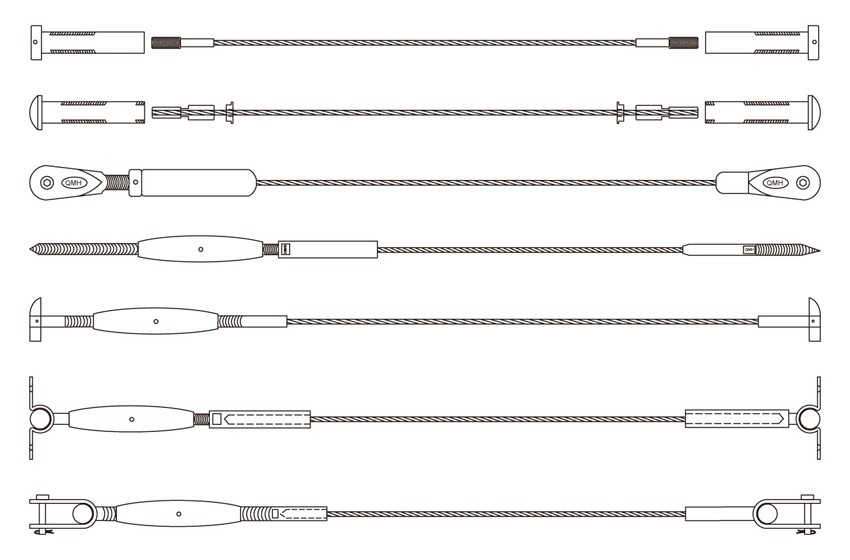|
1. End Post:
The most important element due to its supportive function of the tension of the cable.
The following are the most common type of post and spec.
Wood Post: The 6”x4” wood post is strongly recommended to support the tension.
Square Tube: 1/4” thickness is recommended.
Round Tube: Schedule 80 or thicker is recommended.
Angle Post: 2” wide x 1/2” thickness is recommended.
Flat Bar: 1/2” thick with double bar and bridged between 2 bars to withstand the tension.
2. Middle Post:
The middle post should be no more than every 4 feet for horizontal railing and 3 feet for vertical railing. Since they are just for supporting the cable, they do not require the same strength as the end post.
3. Hole to Drill:
It depends on the type of fittings you choose, if you use the pre-fabricated assembly by QMH, the holes should be large enough to pass thru the cable assembly on the middle post, if you choose the DIY fittings, the holes on the middle post can be smaller. In this catalog, we indicated the hole size needs to drill on each of our fittings.
4. Cable diameter:
Although we carry cable and fitting from 1/8” to 5/8”, the most common and cost effective sizes are 1/8”, 3/16” and 1/4” in residential and commercial application and fittings for larger sizes of cable will be found in our website.
|
|
5. Cable Type:
We offer 1x19, 7x7 and 7x19 in construction but the most suitable one is 1x19 because of its stiffness and lack of stretching, therefore is most used on cable rail application.
6. Cable Length:
Within 30 ft, “Tensioning End Fittings” can be used on both end, between 30-50 ft, a “Turnbuckle” is recommended at least on one end for better adjustment.
7. Cable Spacing:
Check with your local city for building code, we recommend to be between 1/2” to 1” less than the requirement by the code.
8.Cable Tension:
We recommend 350 lb of tension for each cable, therefore the strength on the end post is critical.
9. Machine Swage vs. Hand Swage:
Most of our fittings are machine swage, which requires a special roller machine to swage the cable into the fitting which will guarantee the safety and load limit of the assembly, however, we do offer some fittings that customers can swage at the job site with our special hand tool. Unlike the machine swage fittings, the hand swage fittings will provide between 60 to 70% of the cable strength if done properly.
|


